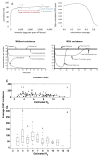Modeling infectious disease dynamics in the complex landscape of global health
- PMID: 25766240
- PMCID: PMC4445966
- DOI: 10.1126/science.aaa4339
Modeling infectious disease dynamics in the complex landscape of global health
Abstract
Despite some notable successes in the control of infectious diseases, transmissible pathogens still pose an enormous threat to human and animal health. The ecological and evolutionary dynamics of infections play out on a wide range of interconnected temporal, organizational, and spatial scales, which span hours to months, cells to ecosystems, and local to global spread. Moreover, some pathogens are directly transmitted between individuals of a single species, whereas others circulate among multiple hosts, need arthropod vectors, or can survive in environmental reservoirs. Many factors, including increasing antimicrobial resistance, increased human connectivity and changeable human behavior, elevate prevention and control from matters of national policy to international challenge. In the face of this complexity, mathematical models offer valuable tools for synthesizing information to understand epidemiological patterns, and for developing quantitative evidence for decision-making in global health.
Copyright © 2015, American Association for the Advancement of Science.
Figures


References
-
- World Health Organization. Global strategy for health for all by the year 2000. WHO; Geneva: 1981. http://whqlibdoc.who.int/publications/9241800038.pdf.
-
- World Health Organization. Mortality and global health estimates 2013. WHO; 2013. http://apps.who.int/gho/data/node.main.686?lang=en.
-
- Daszak P, Cunningham AA, Hyatt AD. Emerging infectious diseases of wildlife--threats to biodiversity and human health. Science. 2000;287:443–449. - PubMed
Publication types
MeSH terms
Grants and funding
LinkOut - more resources
Full Text Sources
Other Literature Sources
Medical

